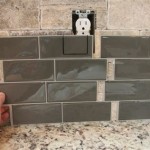Ceiling Tiles: A DIY Guide to Transforming Your Space
Ceiling tiles offer a versatile and affordable method to revamp the aesthetics and functionality of your home. They are available in a wide range of materials, designs, and textures, allowing homeowners to create a personalized and inviting atmosphere without breaking the bank. This guide will provide a comprehensive overview of ceiling tile installation, equipping you with the knowledge and confidence to tackle this DIY project.
Choosing the Right Ceiling Tiles
The first step in your ceiling tile journey is selecting the appropriate type for your needs. Consider the following factors:
- Material: Ceiling tiles are commonly made from materials such as mineral fiber, fiberglass, foam, metal, or wood. Each material boasts unique properties in terms of fire resistance, moisture resistance, acoustics, and aesthetics.
- Size and Shape: Ceiling tiles are available in various sizes, typically ranging from 12x12 inches to 24x24 inches. The most common shape is square, but rectangular and even unique designs are also available. Choose a size and shape that complements your existing ceiling and décor.
- Style: From sleek and modern to traditional and rustic, ceiling tiles offer a broad range of styles. Consider the overall design of your room and select tiles that enhance the existing aesthetic or create a new look.
- Finish: Ceiling tiles come in various finishes, including painted, textured, embossed, or even patterned. Choose a finish that complements your existing décor and provides the desired visual impact.
- Acoustics: If you are aiming to improve the acoustics of your space, consider acoustic ceiling tiles. These tiles are designed to absorb sound, reducing noise levels and improving the quality of sound within the room.
Preparing for Installation
Before embarking on the installation process, it is crucial to ensure your ceiling is ready. Here are some essential steps:
- Clear the Area: Remove any furniture, fixtures, or other objects from the area where you will be installing the ceiling tiles. Ensure the space is well-ventilated and free of obstructions.
- Inspect the Ceiling: Carefully inspect the existing ceiling for any damage, cracks, or uneven surfaces. Repair or patch any imperfections before proceeding with installation.
- Clean the Ceiling: Wipe down the ceiling with a damp cloth to remove dirt, dust, or debris. Ensure the surface is clean and dry before attaching the tiles.
- Measure and Mark: Measure the area where you will be installing the tiles and mark the ceiling accordingly. This will ensure accurate placement and avoid cutting tiles unnecessarily.
Installing Ceiling Tiles
The installation process itself is relatively simple and can be completed using a few basic tools. Here are the steps involved:
- Start in a Corner: Begin installing tiles in a corner of the room, working your way across the ceiling. This will create a clean and consistent look.
- Attach the Tiles: Most ceiling tiles come with adhesive backing or require the use of construction adhesive. Follow the manufacturer's instructions carefully for proper application.
- Cut Tiles as Needed: For areas where whole tiles cannot fit, use a utility knife or other appropriate tool to cut the tiles to size. Ensure the cut edges are clean and straight.
- Install Trim Pieces: For finishing edges, use trim pieces, which are typically made of wood or plastic. Attach them to the walls using adhesive or nails.
- Clean Up: Once installation is complete, use a damp cloth to wipe away any excess adhesive or debris from the tiles and surrounding area.
Additional Tips for Success
To achieve the best results and ensure a smooth installation, consider these additional tips:
- Plan for Lighting: If you are installing lighting fixtures, ensure they are positioned before installing the tiles. You may need to cut holes in the tiles to accommodate the fixtures.
- Use a Level: To ensure the tiles are installed straight and even, use a level to check their alignment as you work.
- Wear Protective Gear: When cutting tiles, wear safety glasses and gloves to protect your eyes and hands from potential debris or sharp edges.
- Consult a Professional: If you are unsure about any aspect of the installation process or are working with a complex ceiling design, it is best to consult a professional contractor.

Say Goodbye To Messy Popcorn Ceilings Diy Guide Covering With Glue Up Ceiling Tiles

Beginner S Guide To Ceiling Tiles Diy Tutorial

Ceiling Tile Installation Comparing Your Options Ceilings Armstrong Residential

How To Remove A Ceiling Tile Easy Diy Guide

Say Goodbye To Messy Popcorn Ceilings Diy Guide Covering With Glue Up Ceiling Tiles

A Drop Ceiling That Looks Better Than Drywall How To Install In Basement Diy

How To Install A Drop Ceiling 14 Steps With Pictures Wikihow

How To Install Easy Ceiling Tile
How To Install Drop Ceilings Easy Guide Kanopi By Armstrong

How To Upgrade Your Basement Drop Ceiling Lake And Lumber
Related Posts








